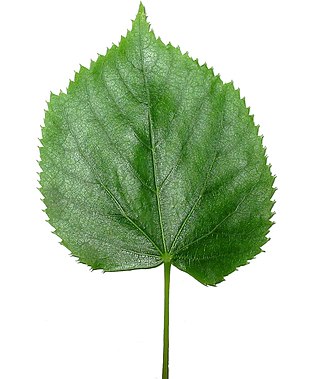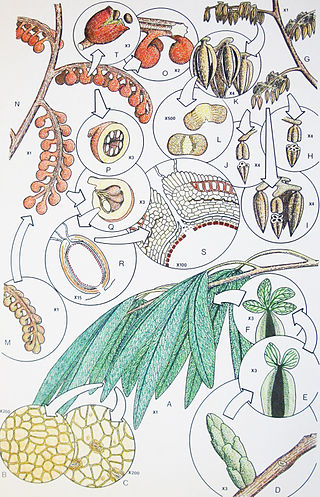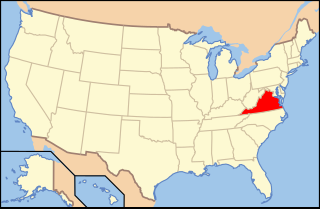
Cycads are seed plants that typically have a stout and woody (ligneous) trunk with a crown of large, hard, stiff, evergreen and (usually) pinnate leaves. The species are dioecious, that is, individual plants of a species are either male or female. Cycads vary in size from having trunks only a few centimeters to several meters tall. They typically grow very slowly and live very long. Because of their superficial resemblance, they are sometimes mistaken for palms or ferns, but they are not closely related to either group.

Bennettitales is an extinct order of seed plants that first appeared in the Permian period and became extinct in most areas toward the end of the Cretaceous. Bennettitales were amongst the most common seed plants of the Mesozoic, and had morphologies including shrub and cycad-like forms. The foliage of bennettitaleans is superficially nearly indistinguishable from that of cycads, but they are distinguished from cycads by their more complex flower-like reproductive organs, at least some of which were likely pollinated by insects.

Glossopteridales is an extinct order of seed plants, known from the Permian of Gondwana. They arose at the beginning of the Permian, and the majority or all members of the group became extinct at the end of the Permian, during the Permian-Triassic extinction event. Possible Triassic records of the group have been recorded. The best known genus is Glossopteris, a leaf form genus. Other examples are Gangamopteris,Glossotheca, and Vertebraria.

The Hell Creek Formation is an intensively studied division of mostly Upper Cretaceous and some lower Paleocene rocks in North America, named for exposures studied along Hell Creek, near Jordan, Montana. The formation stretches over portions of Montana, North Dakota, South Dakota, and Wyoming. In Montana, the Hell Creek Formation overlies the Fox Hills Formation. The site of Pompeys Pillar National Monument is a small isolated section of the Hell Creek Formation. In 1966, the Hell Creek Fossil Area was designated as a National Natural Landmark by the National Park Service.
Gigantopterids (Gigantopteridales) is an extinct, possibly polyphyletic group of seed plants known from the Permian period. Gigantopterids were among the most advanced land plants of the Paleozoic Era and disappeared around the Permian–Triassic extinction event around 252 million years ago. Though some lineages of these plants managed to persist initially, they either disappeared entirely or adapted radically, evolving into undetermined descendants, as surviving life prospered again in much-altered ecosystems. One hypothesis proposes that at least some "gigantopterids" became the ancestors of angiosperms and/or Bennettitales and/or Caytoniales.

Mecistotrachelos is an extinct genus of gliding reptile from the Late Triassic of Virginia. It is generally interpreted as an archosauromorph, distantly related to crocodylians and dinosaurs. The type and only known species is M. apeoros. This specific name translates to "soaring longest neck", in reference to its gliding habits and long neck. This superficially lizard-like animal was able to spread its lengthened ribs and glide on wing-like membranes. Mecistotrachelos had a much longer neck than other gliding reptiles of the Triassic such as Icarosaurus and Kuehneosaurus. It was probably an arboreal insectivore.

A leaf is a principal appendage of the stem of a vascular plant, usually borne laterally aboveground and specialized for photosynthesis. Leaves are collectively called foliage, as in "autumn foliage", while the leaves, stem, flower, and fruit collectively form the shoot system. In most leaves, the primary photosynthetic tissue is the palisade mesophyll and is located on the upper side of the blade or lamina of the leaf but in some species, including the mature foliage of Eucalyptus, palisade mesophyll is present on both sides and the leaves are said to be isobilateral. Most leaves are flattened and have distinct upper (adaxial) and lower (abaxial) surfaces that differ in color, hairiness, the number of stomata, the amount and structure of epicuticular wax and other features. Leaves are mostly green in color due to the presence of a compound called chlorophyll which is essential for photosynthesis as it absorbs light energy from the sun. A leaf with lighter-colored or white patches or edges is called a variegated leaf.

The Pekin Formation is a Late Triassic (Carnian) geological formation in North Carolina. The Pekin Formation is specific to the Sanford Sub-Basin of the Deep River Basin of North Carolina, although it may be equivalent to the Stockton Formation of Pennsylvania, New Jersey, and New York. The Pekin Formation was deposited in a rift basin along the Atlantic margin of North America during the breakup of the supercontinent Pangaea during the Late Triassic. The most common rocks in the Pekin Formation are red to brown sandstones, representing a terrestrial fluvial (riverine) and floodplain environment in a hot, humid climate. It has yielded both abundant plant and animal fossils, including some of the oldest potential dinosaur footprints in the world and the large predatory crocodylomorph Carnufex carolinensis.

The Caytoniales are an extinct order of seed plants known from fossils collected throughout the Mesozoic Era, around 252 to 66 million years ago. They are regarded as seed ferns because they are seed-bearing plants with fern-like leaves. Although at one time considered angiosperms because of their berry-like cupules, that hypothesis was later disproven. Nevertheless, some authorities consider them likely ancestors or close relatives of angiosperms. The origin of angiosperms remains unclear, and they cannot be linked with any known seed plants groups with certainty.

The Cow Branch Formation is a Late Triassic geologic formation in Virginia and North Carolina in the eastern United States. The formation consists of cyclical beds of black and grey lacustrine (lake) mudstone and shale. It is a konservat-lagerstätte renowned for its exceptionally preserved insect fossils, along with small reptiles, fish, and plants. Dinosaur tracks have also been reported from the formation.
The Chinle Formation is an extensive geological unit in the southwestern United States, preserving a very diverse fauna of Late Triassic animals and plants. This is a list of fossilized organisms recovered from the formation.

Dicroidium is an extinct genus of fork-leaved seed plants. It is the archetypal genus of the corystosperms, an extinct group of seed plants, often called "seed ferns", assigned to the order Corystospermales or Umkomasiales. Species of Dicroidium were widely distributed and dominant over Gondwana during the Triassic. Their fossils are known from South Africa, the Arabian Peninsula, Australia, New Zealand, South America, Madagascar, the Indian subcontinent and Antarctica.
Petrocardium is an extinct genus of monocot plants in the family Araceae. At present it contains only two species Petrocardium cerrejonense and Petrocardium wayuuorum, the type species. The genus is solely known from the Middle to Late Paleocene, Cerrejón Formation deposits in Colombia.

Paleontology in Virginia refers to paleontological research occurring within or conducted by people from the U.S. state of Virginia. The geologic column in Virginia spans from the Cambrian to the Quaternary. During the early part of the Paleozoic, Virginia was covered by a warm shallow sea. This sea would come to be inhabited by creatures like brachiopods, bryozoans, corals, and nautiloids. The state was briefly out of the sea during the Ordovician, but by the Silurian it was once again submerged. During this second period of inundation the state was home to brachiopods, trilobites and entire reef systems. During the mid-to-late Carboniferous the state gradually became a swampy environment.

Tsukada is an extinct genus of flowering plant in the family Nyssaceae related to the modern "dove-tree", Davidia involucrata, containing the single species Tsukada davidiifolia. The genus is known from fossil leaves found in the early Eocene deposits of northern Washington state, United States and a similar aged formation in British Columbia, Canada.

Ctenis is a genus of fossil foliage attributable to the Cycadales, being one of the most common genera of cycad fossil leaves in the Mesozoic.

Polymorphodon is an extinct genus of archosauriform reptile from the Middle Triassic of Germany. The only known species is Polymorphodon adorfi, discovered in Lower Keuper deposits at a quarry in Eschenau, Germany. Polymorphodon is notable for its heterodont dentition, with long and conical premaxillary teeth followed by thin maxillary teeth with large serrations. Maxillary teeth near the back of the mouth are short and leaf-shaped, similar to some living and extinct reptiles with a herbivorous or omnivorous diet. This may suggest that Polymorphodon had some reliance on plants in its diet, a rarity among basal archosauriforms, most of which are carnivores.

Sanmiguelia is an extinct plant genus, probably of flowering plants. The genus and the species Sanmiguelia lewisii were first described in 1956 from the Late Triassic Chinle Formation in Colorado, and later in Lower Jurassic Moenave Formation in Utah. The species has been suggested to be one of the more primitive angiosperm fossils.

Pterophyllum is an extinct form genus of leaves known from the Carnian to the Maastrichtian, belonging to the Bennettitales. It contains more than 50 species, and is mainly found in Eurasia and North America.

Furcula is a genus of extinct plant from Late Triassic Greenland. It contains one species, F. granulifer. The leaves of Furcula have complex net-like veins like those of angiosperms ; because of this, it was long considered a possible stem-group angiosperm. However, a recent reinvestigation suggests it is a peltasperm that convergently evolved angiosperm-like veins.
















